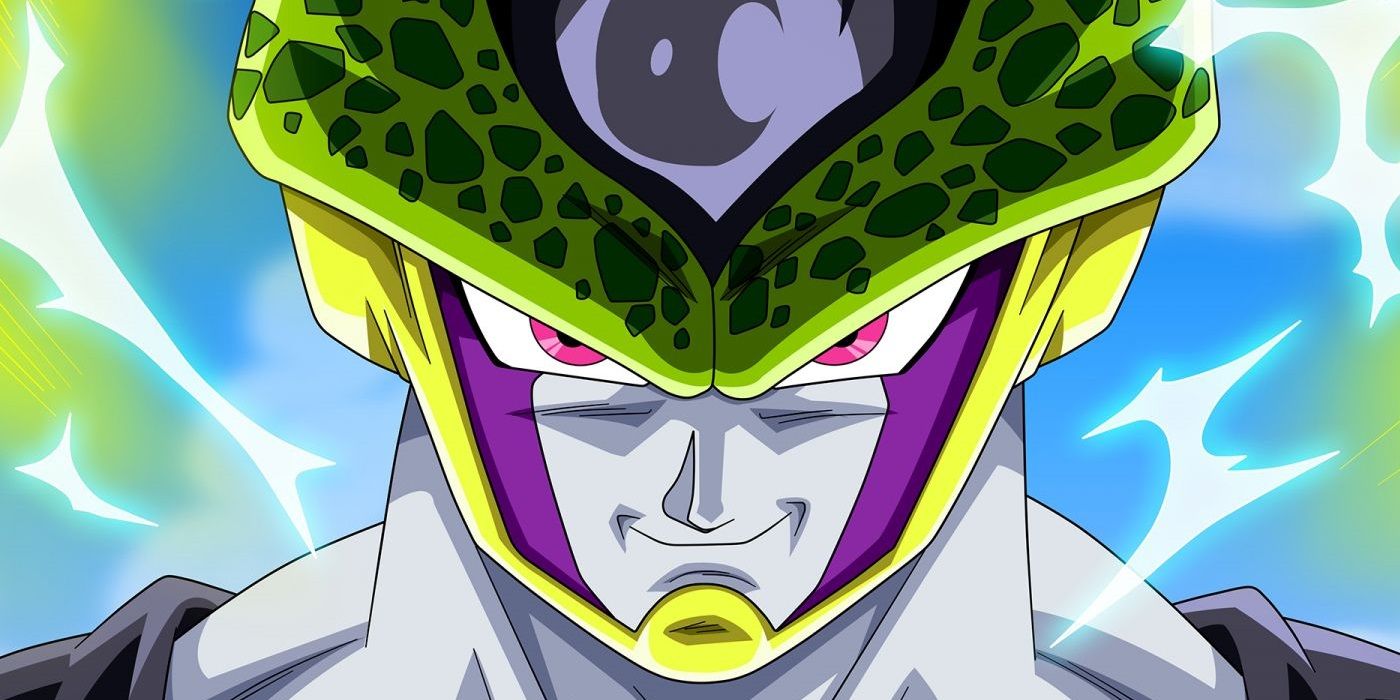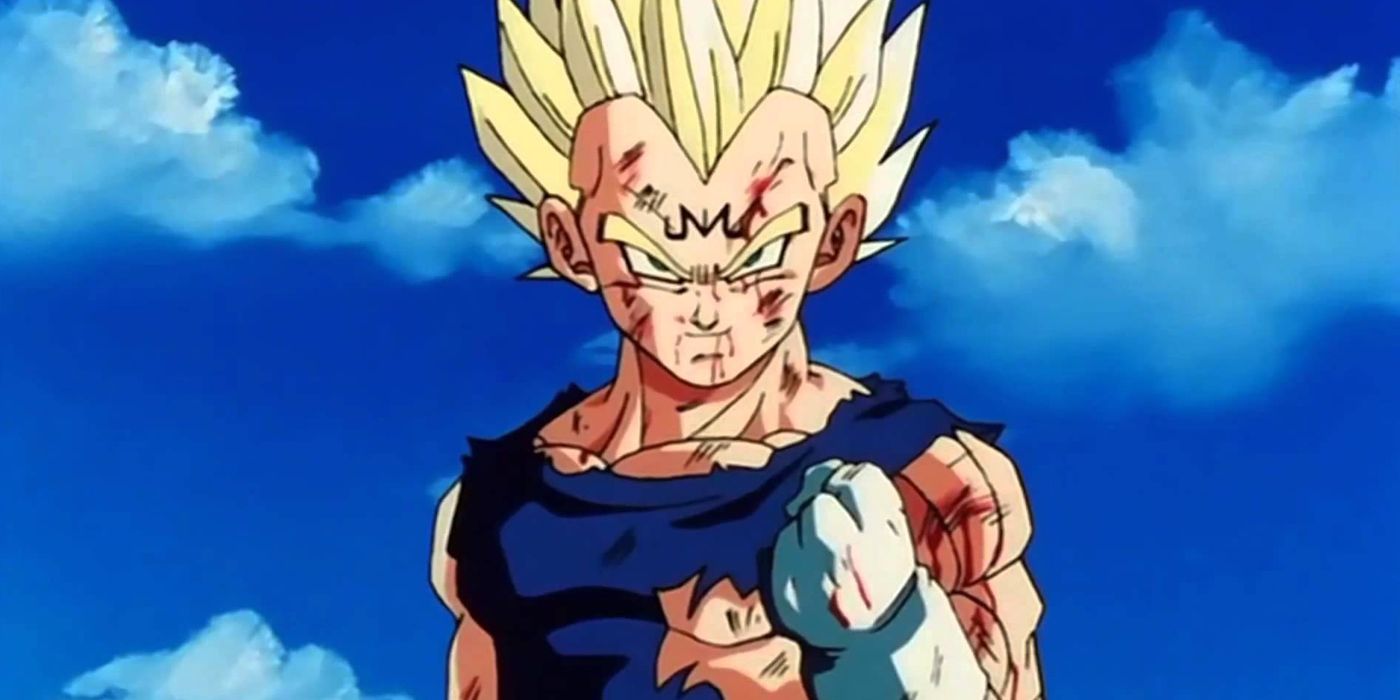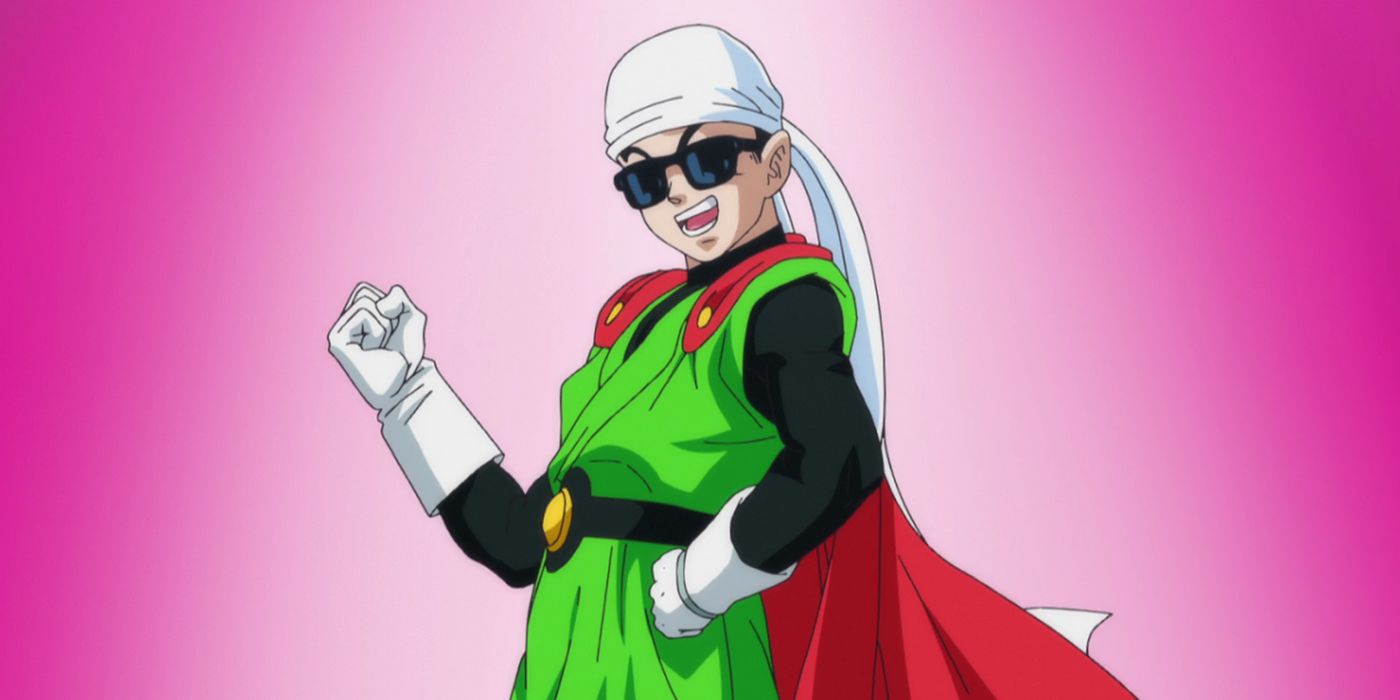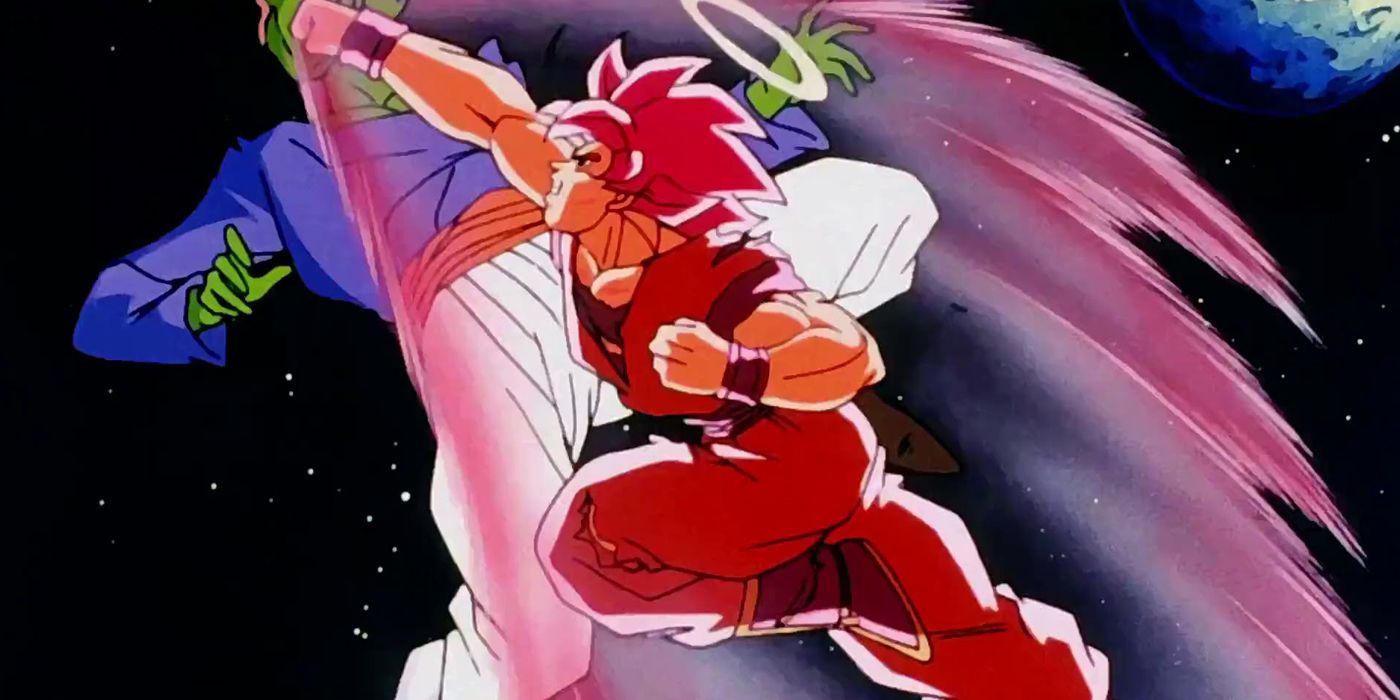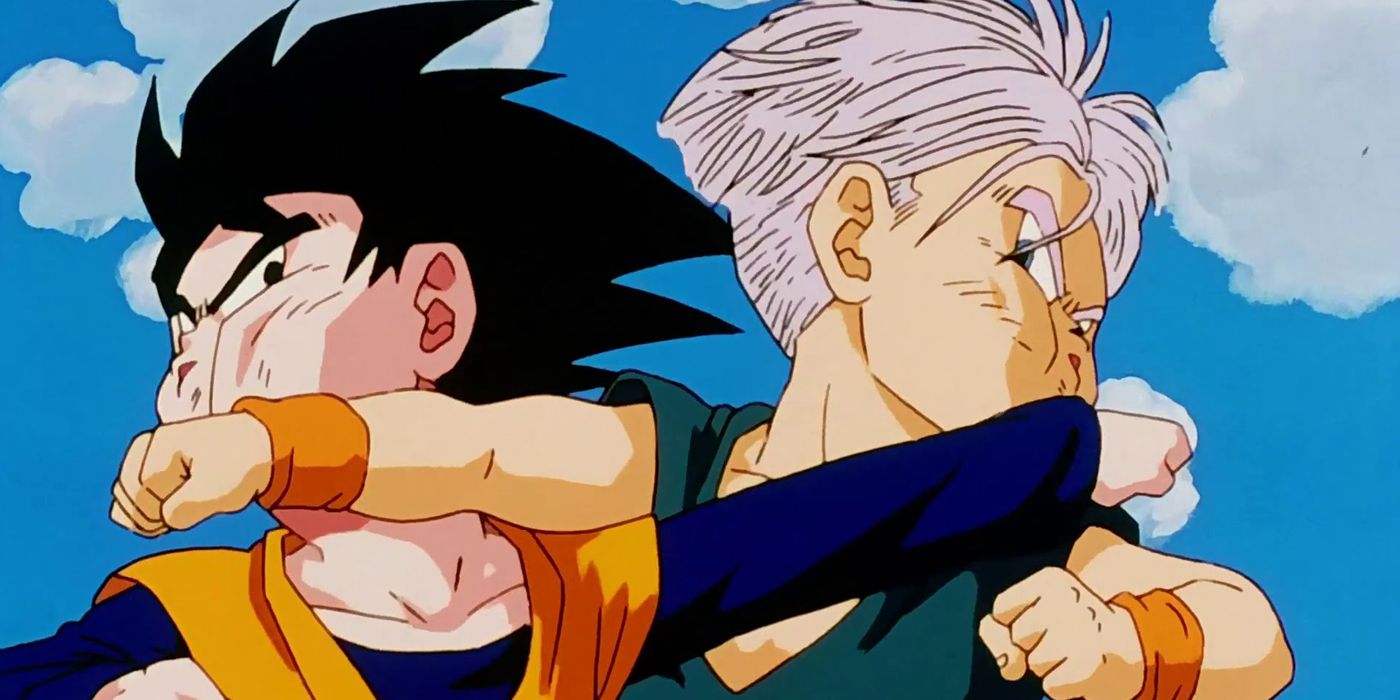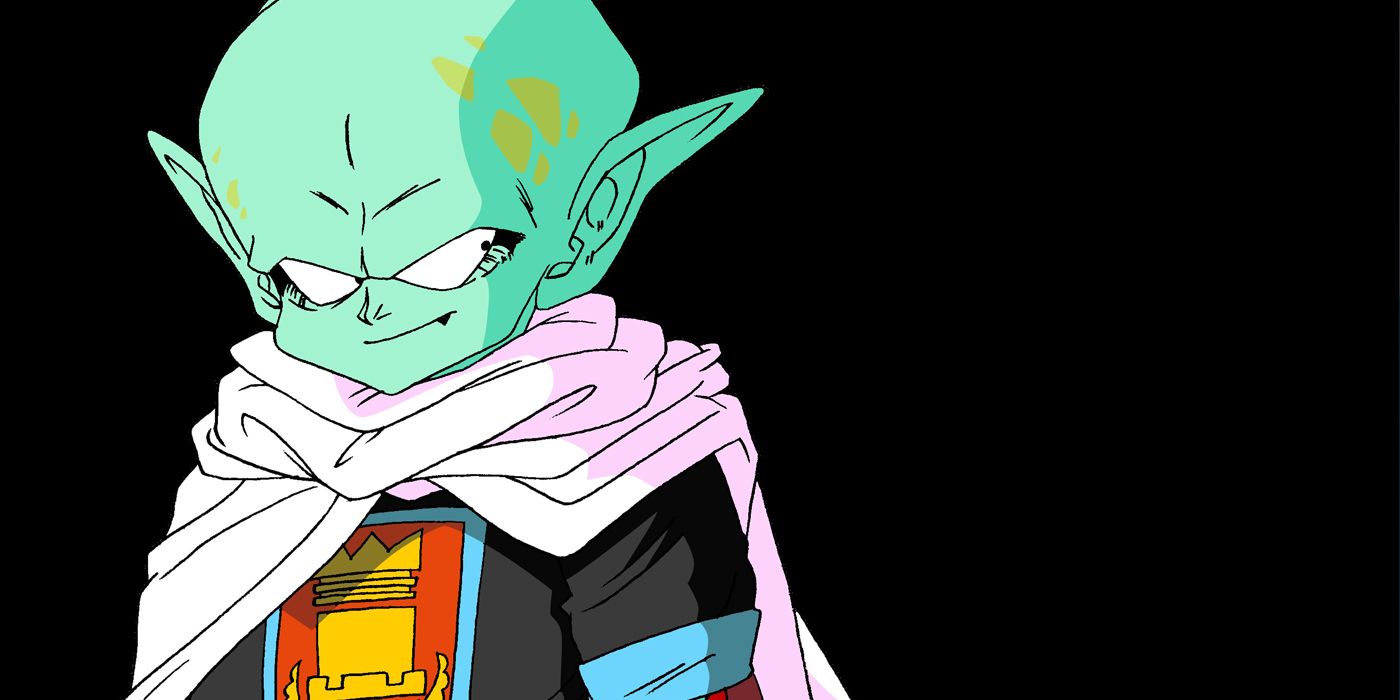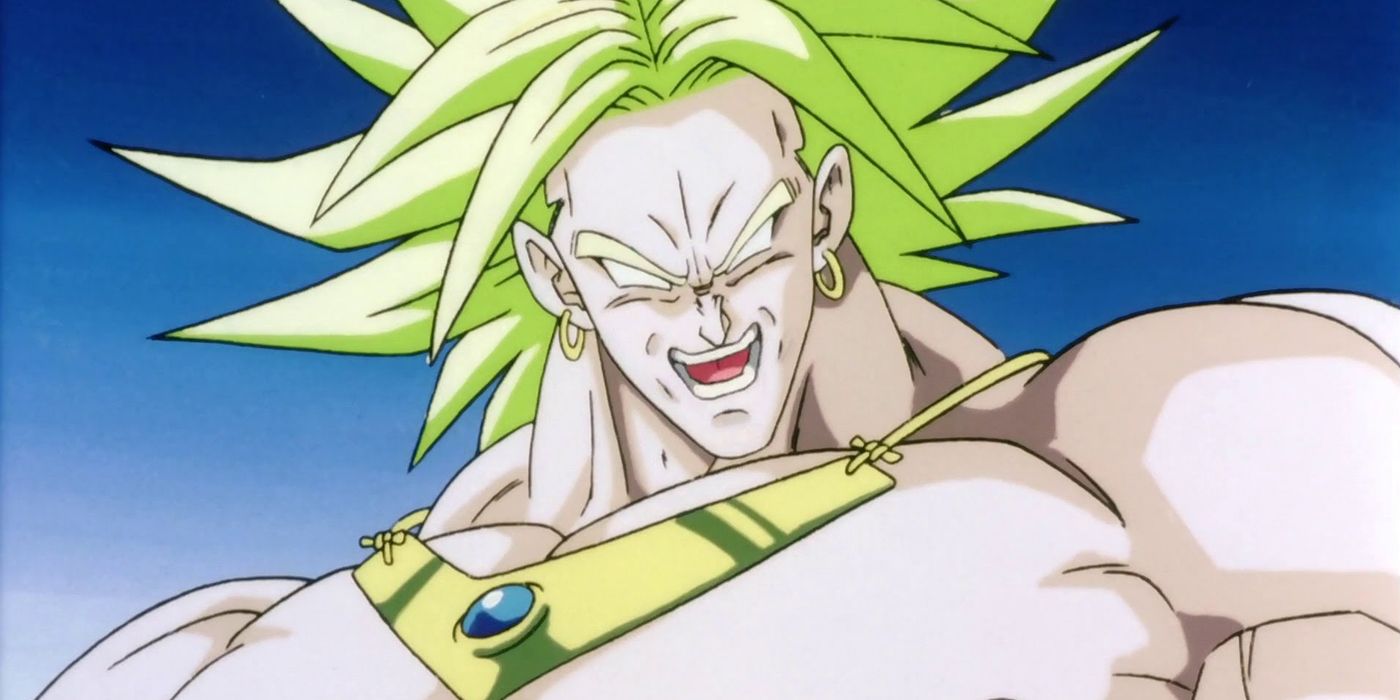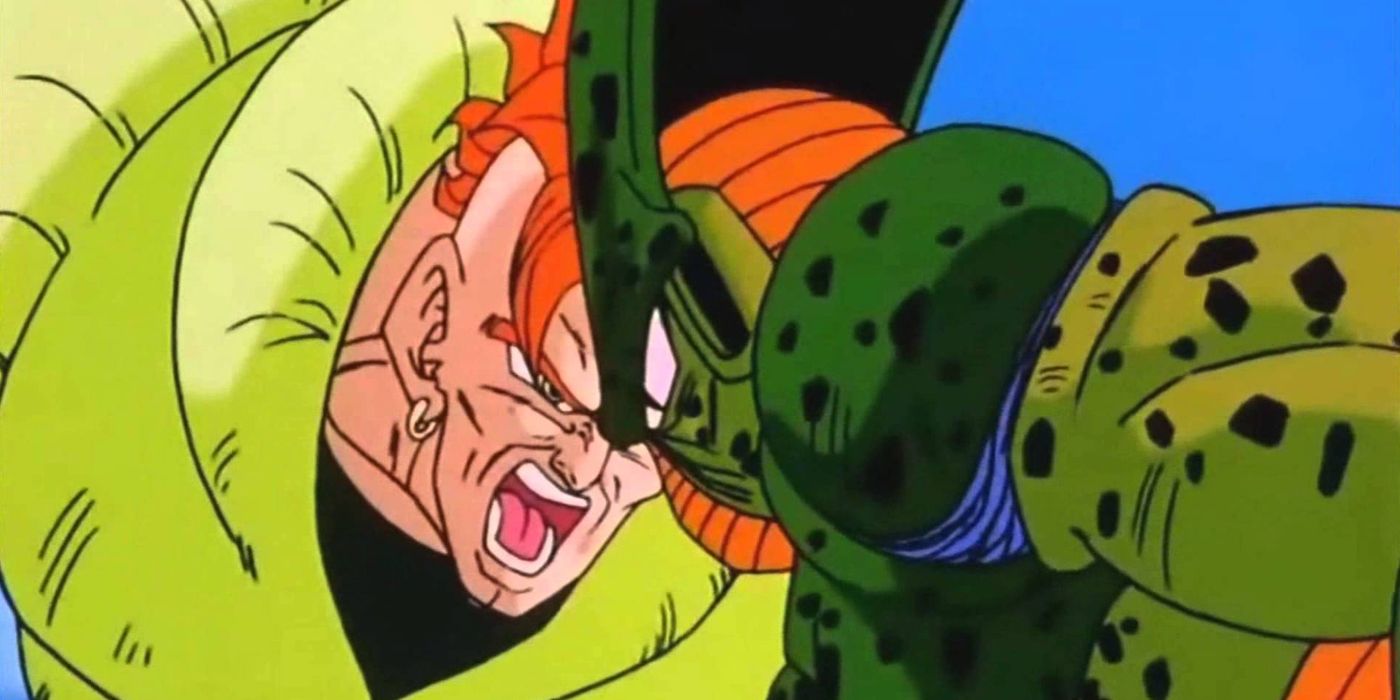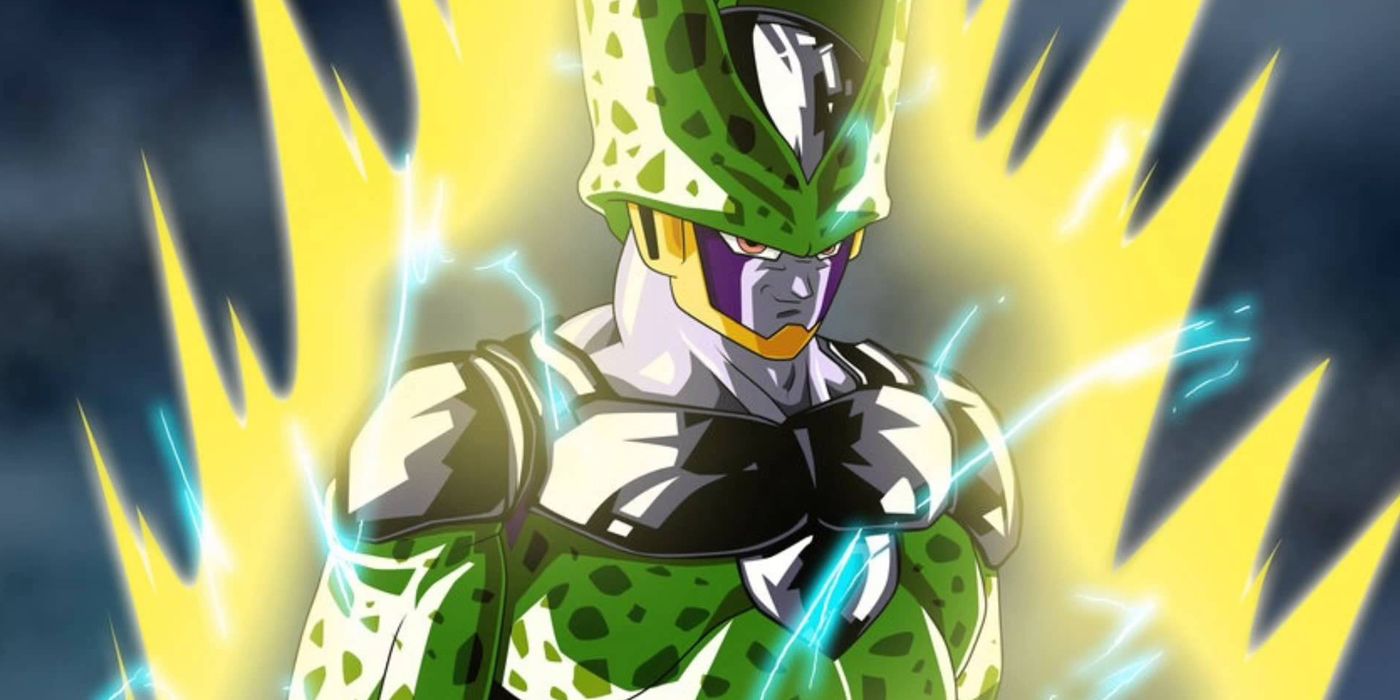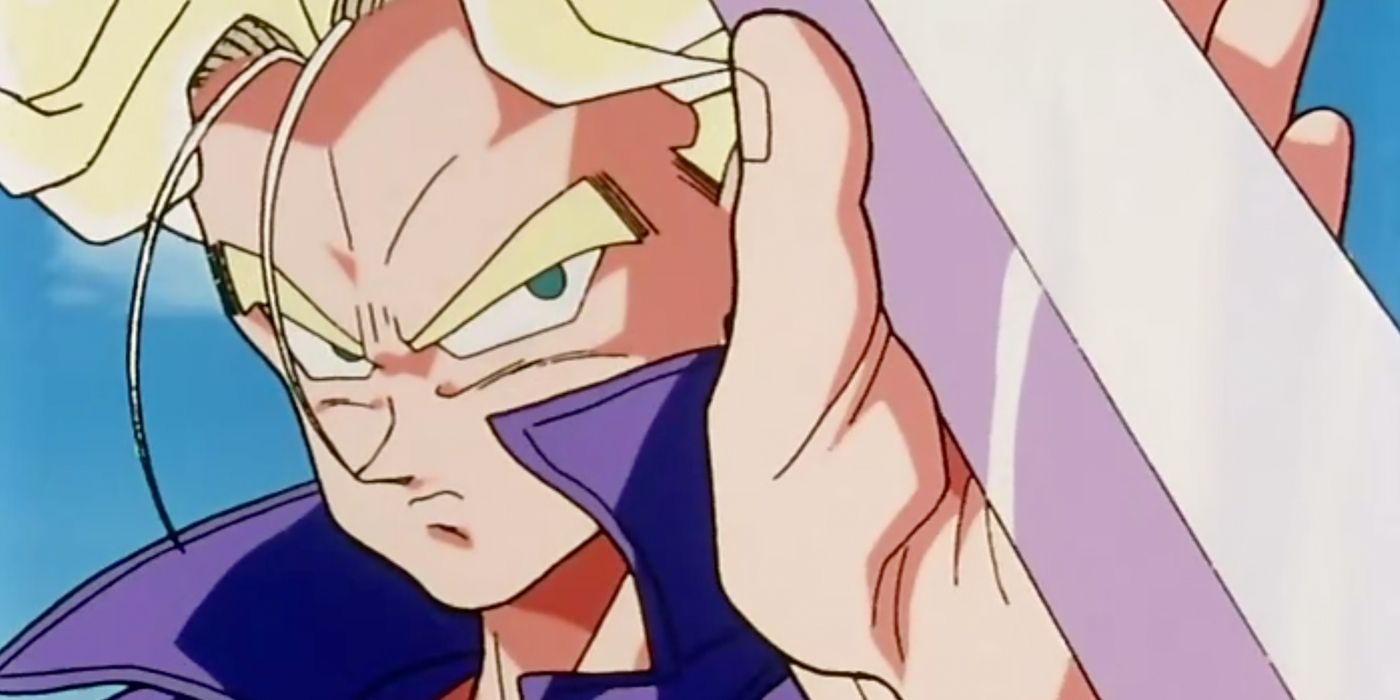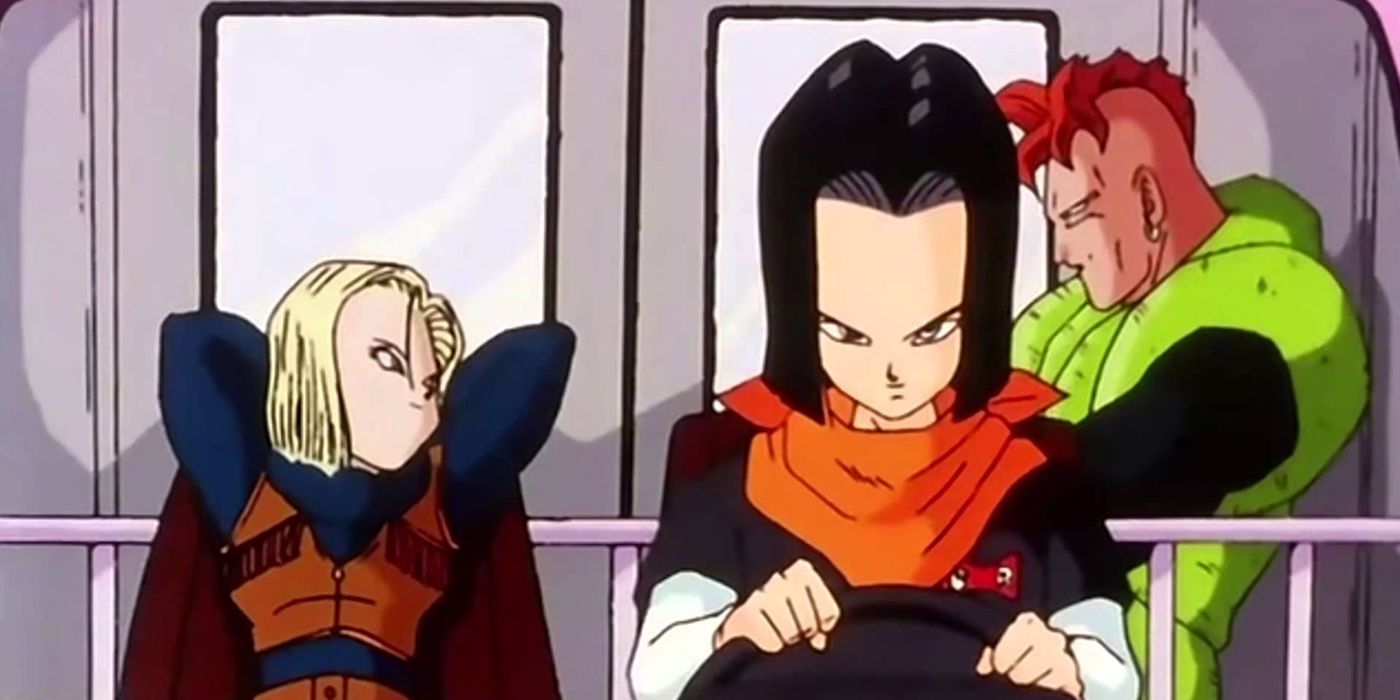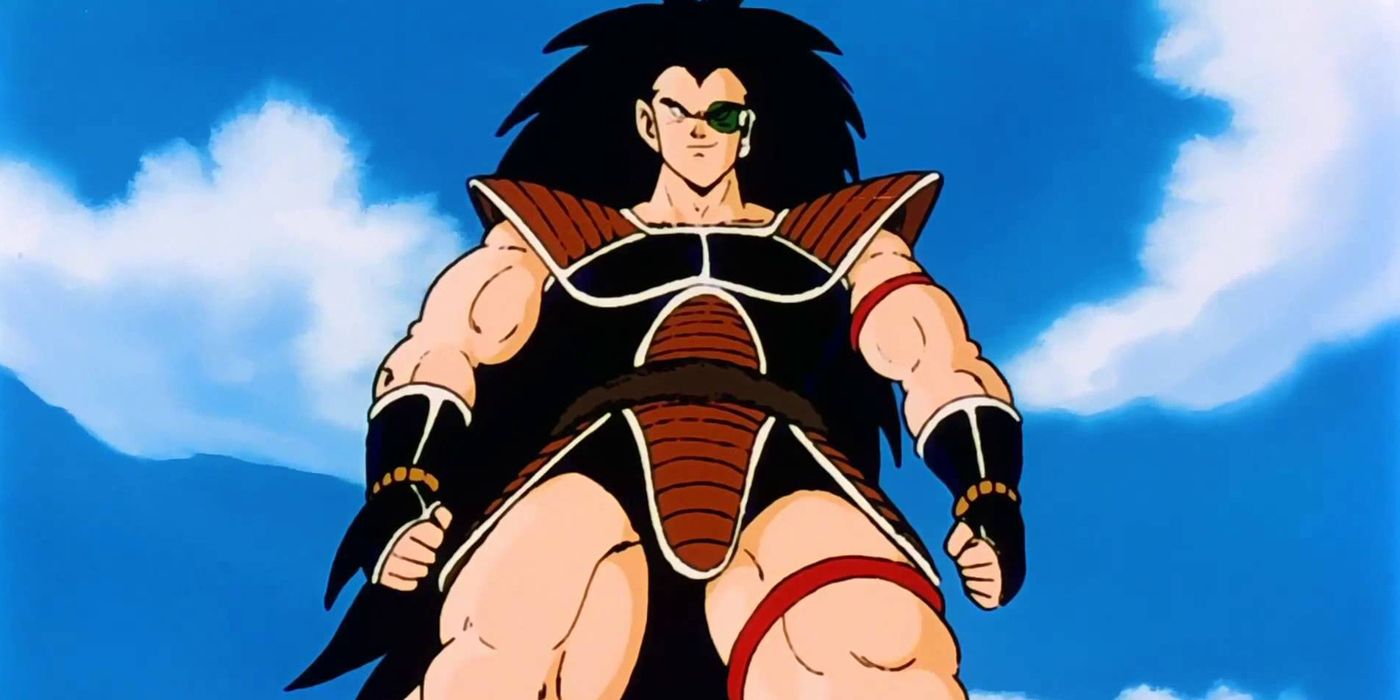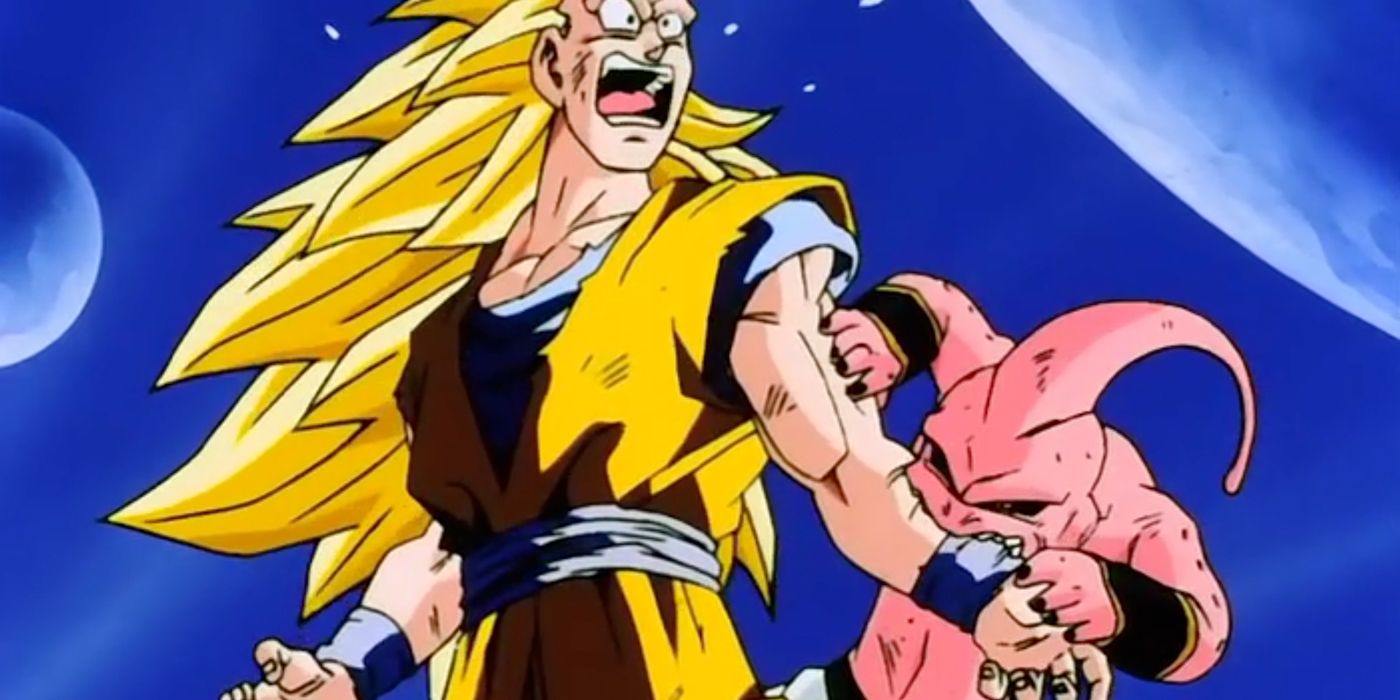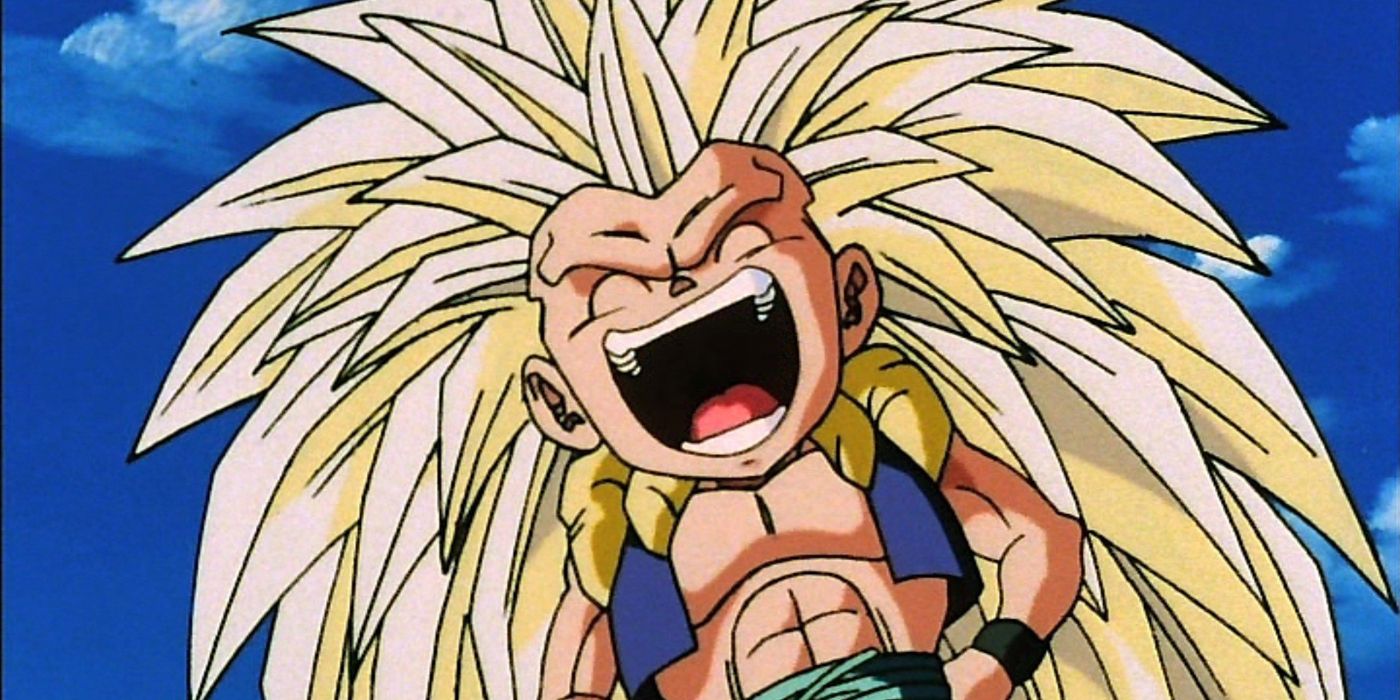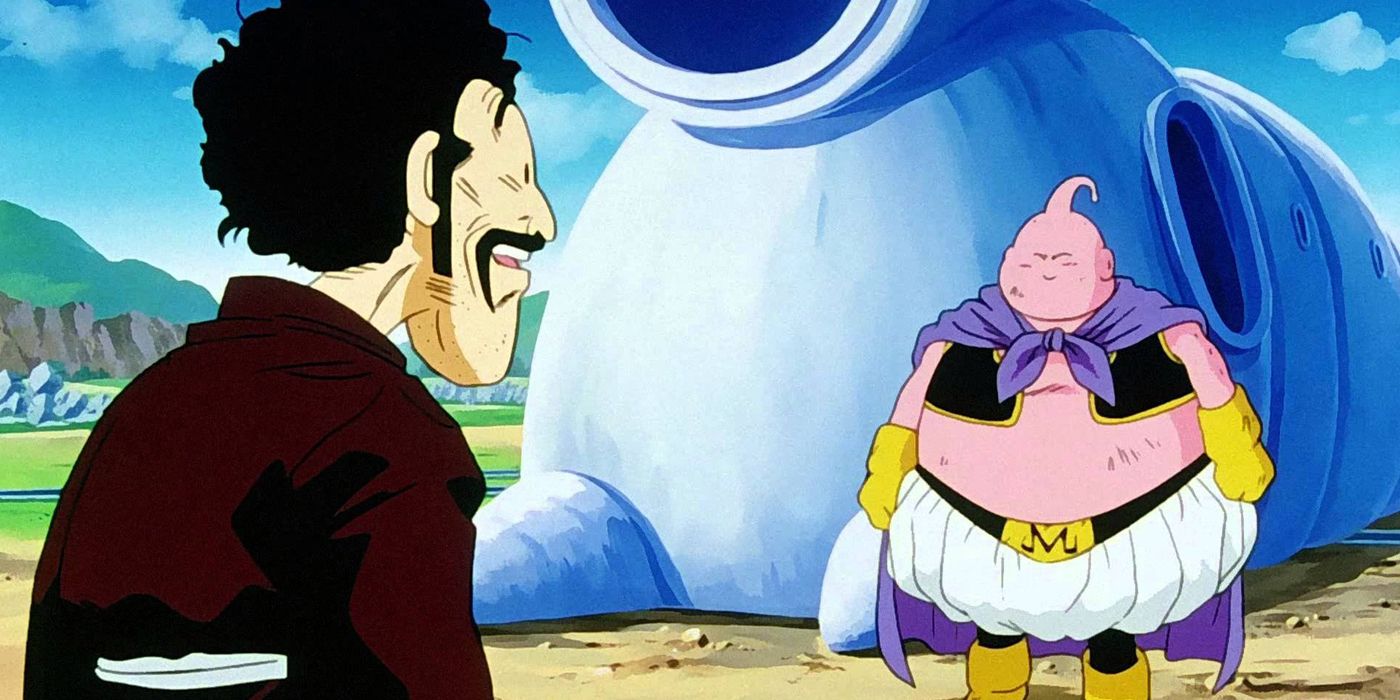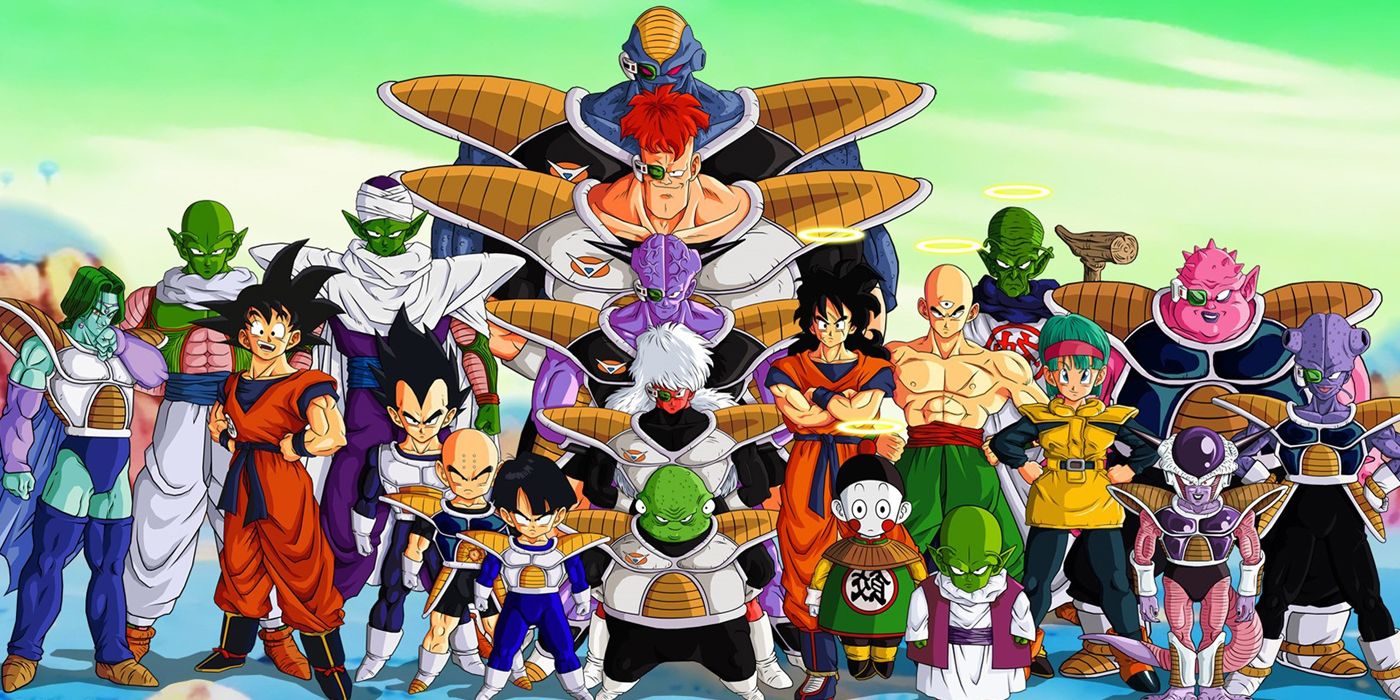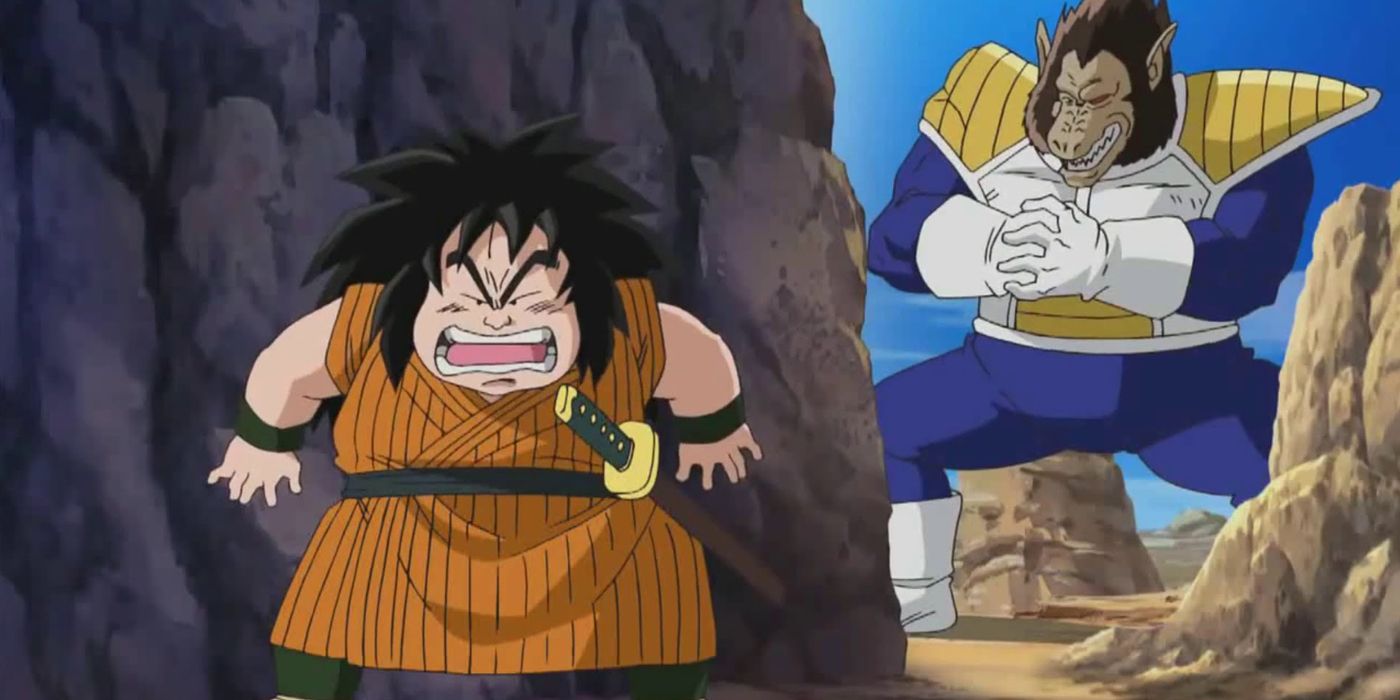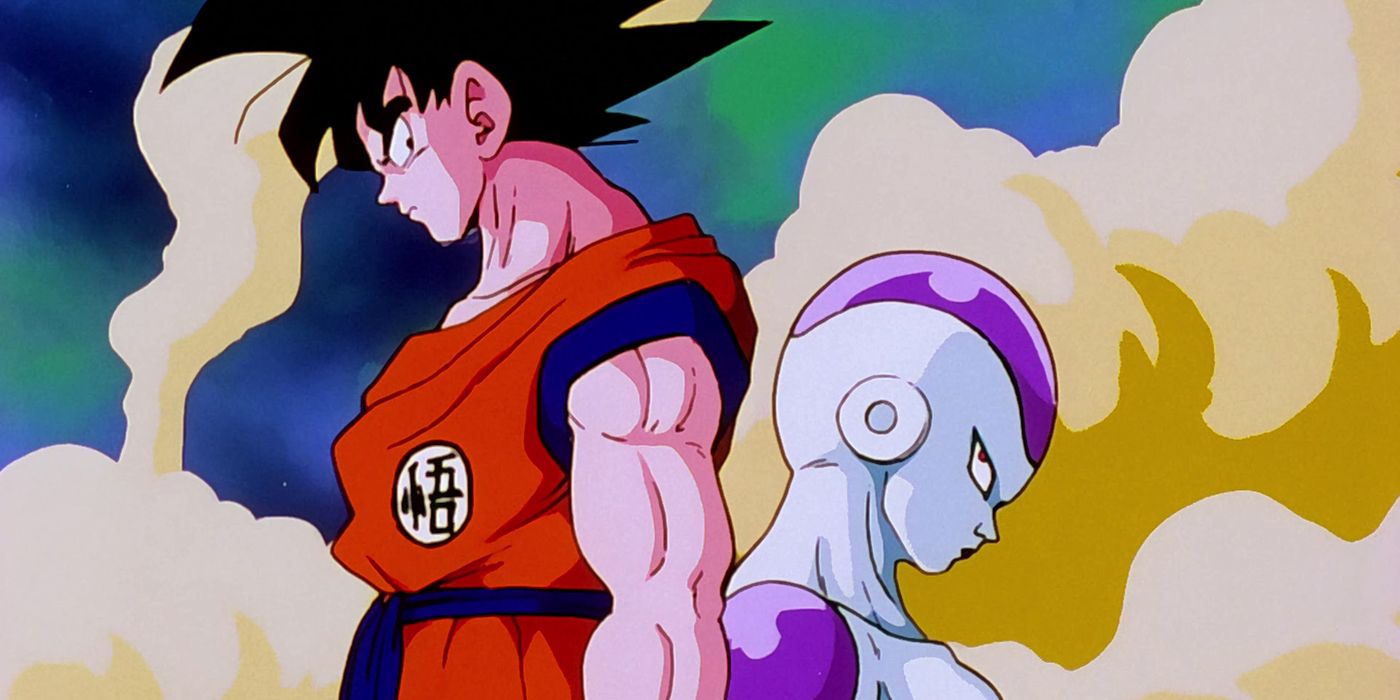“Dragon Ball Z” -- is there anything better? Adapted from the second part of Akira Toriyama’s long running “Dragon Ball” manga, DBZ has gone from show to cultural touchstone. First airing in Japan from 1989 to 1996, the series wasn’t just a massive hit in its homeland, it was also one of the first anime to truly become a part of the American cultural fabric thanks to its widely seen, shout-filled English dub.
RELATED: The 15 Most Memorable Dragon Ball Z Villains
One of the things that makes “Dragon Ball Z” so unforgettable is the sequential nature of its epic battles. Of course, with 291 episodes and an unfortunate amount of filler, not all of them are equal. Officially, the show is divided into four main arcs, which are each made up of different sagas. So, whether you’re preparing for the recently released sequel series, “Dragon Ball Super,” or just hankering for some DBZ, consult our handy saga ranking, from worst to best.
17 Babidi Saga
After the Cell Games, “Dragon Ball Z” felt a bit aimless. The Other World, Great Saiyaman and World Tournament Sagas that followed had a few moments each, but without an actual villain or threat, they lacked any urgency or stakes. In the Babidi Saga, that finally starts to change, with Supreme Kai leading the Z Fighters to stop the evil wizard Babidi from summoning Majin Buu. But even if there’s finally something worth fighting about, the fights themselves feel like perfunctory wheel spinning, leaving no doubt that Goku and Vegeta will easily defeat their foes.
Things finally do start to heat up once Babidi takes control of Vegeta, and turns him into the evil-again Majin Vegeta. Whatever the circumstances, it’s hard not to get a at least a little excited for what turns into the first Goku vs. Vegeta fight since way back in the Vegeta Saga. But it can’t quite redeem the sense that rest of this saga is just going through the motions.
16 Great Saiyaman Saga
Sorry Gohan. After hundreds of episodes of buildup, the Cell Games saw Goku’s half human son finally fulfilling his destiny to become even stronger than his father. Seven years later, though, everyone seems to have forgotten that particular plot. The Great Saiyman Saga has Gohan end his fighting life in order to attend high school, only to take it up again as the crime-fighting masked superhero, The Great Saiyaman. Unfortunately, as you can see from looking at him, The Great Saiyman is pretty wack, and marks the beginning of the end for Gohan as a central, active character in the DBZ world.
Though comic crimefighting misadventures fail to recapture the humorous spirit of “Dragon Ball” they seem to be going for, the Great Saiyaman Saga isn’t all bad. Gohan’s relationship with Mr. Satan’s daughter Videl isn’t incredible, but it is the first (and last?) romance to get any real attention in the series, since Vegeta and Bulma’s occurs mainly offscreen. More importantly, it introduces Goten and the present day Trunks, and Vegeta’s reaction to his eight-year old son going Super Saiyan is pretty priceless.
15 Other World Saga
As a filler saga created for the anime, the five-episode Other World Saga may be inconsequential, but at least it doesn’t overstay its welcome. When Goku easily puts down a rebellion in Hell lead by Frieza, King Cold, Cell and the Ginyu Force, he meets Pikkon, an anime-original character who seems to be his equal in strength. Eventually, they fight in the finals of the Other World Tournament, a classic "Dragon Ball"-style martial arts tournament fought by the greatest fighters of the afterlife. While that provides a few extra episodes of battling, the most interesting part of the Other World Saga is what happens at ringside.
Pikkon is a student of West Kai, rival of Goku’s teacher King Kai, who, we learn, is actually North Kai, one of four Kais. King Kai is already one of the most entertaining characters in DBZ, and this inter-Kai rivalry gives him some of the spotlight he deserves, even if it was cut from revised series “Dragon Ball Z Kai” entirely.
14 World Tournament Saga
Another piece of the post-Cell rut where DBZ felt like it had run out of ideas, the World Martial Arts tournament seems like another attempt to retread something that had worked in the past. Returning, for the first time since “Dragon Ball,” to Earth’s World Martial Arts Tournament, many epic fights are promised, but few of them actually happen, since the Babidi Saga interrupts. Other than Trunks and Goten’s cheat-filled final in the Junior Division, the only really dramatic moments of this saga are of characters realizing things.
Piccolo realizes his disguised opponent is the Supreme Kai, Mr. Satan realizes the people who actually beat Cell are back, and everyone realizes that Krillin has married Android 18. These are all huge developments, of course, but none so big, perhaps, as Goten meeting his legendary father for the first time. It is a genuinely emotional moment, though it drives home how terrible a dad Goku really is for staying dead his son’s whole life. Still, when an entire episode consists of the characters picking numbers out of a box, it can’t quite save it.
13 Garlic Jr. Saga
Another filler saga only found in the anime, the Garlic Jr. Saga is also a sequel to the first DBZ movie, known both as “Dragon Ball Z: The Movie” and “Dragon Ball Z: Dead Zone.” What distinguishes it from some of the other sagas is that it takes the chance to explore some weirder territory. For example, while it’s something that villains have been attempting to do since the beginning of “Dragon Ball,” the villain Garlic Jr. is the first to ever successfully use the Dragon Balls to make himself immortal.
That was back in the movie, which ends with Gohan trapping him in the Dead Zone. In the anime’s follow up, Garlic Jr. returns, trapping Kami and Mr. Popo in a bottle, and battling the Z Fighters at the Guardian of Earth’s lookout. Since Goku has yet to return from Namek, the Garlic Jr. saga is the only time characters have to face and defeat a major villain without his help. It’s also the only one to feature mind control, with Garlic Jr.’s Black Water Mist causing everyone on earth to act like vampires. Mostly oddly (and hilariously) of this saga specifically is the fact that Garlic Jr.’s henchmen are named, get this, "The Spice Boys."
12 Broly Saga
For a while, Broly may have been the strongest character in “Dragon Ball Z,” but powerful as he is, he only ever appeared in two movies: “The Legendary Super Saiyan” and “Broly: The Second Coming.” Since the movies aren’t canon to the series, he isn’t technically in DBZ, but he’s a big enough deal to include here anyway.
Broly begins life as a Saiyan whose power level as a baby is already as high as the strongest members of his race. He and his father survive both King Vegeta’s attempts to kill him and the destruction of their planet. Eventually, of course, they try to take over the universe. What makes Broly interesting is how he restores a piece of DBZ lore that had been lost. Originally, Goku is thought to be “The Legendary Super Saiyan,” meaning there is only one. But once everyone else starts going Super Saiyan too, the legend seems inaccurate. That is, it does until Broly shows up to claim the title. Even if the movies themselves aren’t great, he is clearly thestuff of legend and is still considered to be one of the most iconic characters in the series.
11 Cell Saga
Okay, time for some full disclosure: we’re folding the Imperfect Cell and Perfect Cell sagas into one, since they are basically one continuous plot that follows the race to stop Cell from absorbing the Androids, featuring a very long battle with him once he does. Involving just about every one of DBZ’s huge cast of characters, the Cell Saga can’t hep but have its share of high points.
Piccolo’s permanent fusion with Kami, the Androids struggle for survival and Trunks' growing relationship with his dad are all compelling sections. Best of all, perhaps, is the reintroduction of one of the series’ coolest concepts, the Hyperbolic Time Chamber. While Goku trained for a month in it during “Dragon Ball,” this is the first time we actually get to see the place where you can train for a year in a single day (which we could all really use). But what the Cell Saga can’t overcome is that (brace yourselves) Cell is just not a very interesting villain, and easily the weakest, on a character level, in the entire series... at least at this moment.
10 Cell Games Saga
Still suffering from Cell's relative blandness, DBZ attempted what would be the first of many attempts to bring back what worked in “Dragon Ball” -- the martial arts tournament. Of the three times DBZ tried this, it worked by far the best for Cell, because for the first time, we get to see the Z Fighters interacting with the rest of the world, and on TV! Here, we get some idea of what the civilians of the world have been doing during all of DBZ, and get introduced to who they think are the strongest fighters.
What that means is that we meet one of DBZ’s most entertaining characters: Mr. Satan. The current world martial arts champion utterly pales in comparison, even to Yamcha, but he sure is hilarious to watch, especially when somehow managing to take credit for defeating Cell. More seriously, after a buildup that had literally started 182 episodes before in the Raditz Saga, the Cell Games has Gohan finally fulfilling his potential to be the strongest fighter of all when he goes Super Saiyan 2 and defeats Cell… even if he doesn’t stay that way for long.
9 Trunks Saga
While extremely short, the Trunks saga packs in more important pieces than many of the much longer sagas above. After the epic Frieza Saga has finally drawn to a close, you’d think DBZ had done everything, but you know what it hadn’t done yet? Time travel! When an even stronger, cyborg Frieza comes to Earth for revenge while Goku is gone, things seem totally hopeless. But then, every teenager’s favorite character -- the purple-haired Future Trunks -- gets one of the swaggest introductions possible: showing up as a mysterious warrior who promptly goes Super Saiyan and slices Frieza in half with a giant sword before blasting his bits to bits.
Ultimately, it’s all a prelude to the Android Saga, as we learn once Goku returns. But the combination of revelations -- that Trunks is the son of Bulma and Vegeta, from a future ravaged by the Androids after Goku dies of an incurable heart virus, and that he’s come to give him the cure -- is one of the more dramatic pieces of the series. Coupled with the TV special “The History of Trunks,” which tells his backstory in one of the most genuinely tragic parts of DBZ, these seven episodes accomplish quite a bit.
8 Androids Saga
It’s too bad the Androids Saga quickly turns into the less interesting Cell Saga, because despite its fairly short length, it’s one of the better ones. After three years of training following Future Trunks' warning, the Z Fighters are ready to face Dr. Gero’s androids, but everything feels… off. Once Trunks arrives and says the Androids they defeated aren’t the same ones he warned the past about, we start to realize what’s about to happen. Even before that, though, this saga is distinct among all the others.
What makes the Androids Saga work so well is a sense of dread not found anywhere else in the series. Even if we know he’ll survive, watching Super Saiyan Goku fall apart in the middle of a battle because of heart disease is one of the freakier experiences in all of DBZ. Even what’s ostensibly a “good” development -- that Vegeta has learned to go Super Saiyan and can defeat Android 19 and 20 in Goku’s stead -- doesn’t exactly feel like a great thing. After all, we’re still only a few episodes into his life as a non-evil prince. It’s not the most epic, perhaps, but it may well be the most unnerving DBZ saga of all.
7 Raditz Saga
Now we’re really getting to the cream of the crop; the one that started it all. Years after the events of “Dragon Ball,” Goku and friends return… and it turns out they’re not as strong as they thought. The arrival of Goku’s brother, Raditz, changes the world forever when he reveals that Goku is a Saiyan, a member of an almost-extinct warrior race. This saga changes the style of the series, too, going from the overtly humorous tone of "Dragon Ball" to something more violent and serious.
Beginning with a team-up between Goku and Piccolo, who had up until then been a villain, and ending with Goku sacrificing his life in order to stop his brother, Piccolo kidnapping Gohan in order to bring out his huge potential power and the threat of the even stronger Vegeta and Nappa on the way, the Raditz Saga wastes no time in plunging its characters into an extremely dire situation. Remember, this was before the constant use of Dragon Balls to wish people back to life had made death as meaningless as it is in comics. In the Raditz saga, Goku dying was still the worst thing that could happen.
6 Kid Buu Saga
As the grand finale of “Dragon Ball Z,” the Kid Buu Saga pulls out all the stops for a suitably epic conclusion to the series. The crazed, almost personality-less Kid Buu is easily the most intimidating villain since Frieza, and his ability to break the rules of the series, first by successfully destroying Earth, and then by traveling to Supreme Kai’s planet in the Other World to fight Goku and Vegeta there, flip the DBZ universe on its ear.
Like the best DBZ sagas, the big moments come quickly. The original Majin Buu escapes from Kid Buu’s body to protect Mr. Satan, and completes his journey to becoming a hero. Even more amazing was when this saga completed arguably the best character arc of all, when Vegeta finally admits that he’ll never be as strong as Goku, and makes peace with it.
Biggest of all these revelations, however, is that Goku can’t defeat Kid Buu on his own -- he needs the help of everyone on Earth to power a Spirit Bomb. In a series where the solution to every problem is almost always that Goku will defeat it, the ultimate message of DBZ turns out to be that even he can’t do it on his own. Plus, by convincing Earth to help, this time Mr. Satan actually does save the world.
5 Fusion Saga
The second-to-last saga has one main job: set up the final battle to come. This means that everyone except Goku and Vegeta get their final big moments in the series, and they’re mostly great. After a ridiculous ritual, Old Kai unlocks Gohan’s true potential as Ultimate Gohan (aka Mystic Gohan), after which we get a surprise cameo from Tien, who seems to have reached Super Saiyan power levels.
It’s not just the little things, though; the main battles in the Fusion Saga balance intensity and “Dragon Ball”-esque humor incredibly well. Gotenks' fight with Super Buu is both high stakes and totally ridiculous, with the cocky fusion making up stylized attacks to draw the fight out. There’s also the part where Piccolo stalls Super Buu by telling him to kill the remaining humans on Earth, so that Goten and Trunks have enough time to prepare. While he only does it because he plans to wish them back with the Dragon Balls later, that plan is straight nuts! Add Goku and Vegeta fusing, and a journey into Buu’s body, and you get one of DBZ’s weirdest and best parts.
4 Majin Buu Saga
After some increasingly weak sagas, things were not looking great for “Dragon Ball Z.” That is, until its most powerful villain emerged as a giant pink ball who turns his enemies into food. With the uninteresting power of Cell and the unimportant-feeling World Tournament and Babidi Sagas, Majin Buu made it feel like Toriyama had finally figured out how to incorporate the goofy spirit of “Dragon Ball” into the grimmer “Dragon Ball Z” world. This is a saga where, after Vegeta heroically sacrifices himself in hopes of saving the world, Buu raids a cake factory and has a conveyor belt shovel whole cakes into his mouth. It's great.
It’s the Majin Buu saga where DBZ’s last two big developments happen: first, the fusion dance, which in its combination of silliness and importance also recalls “Dragon Ball,” and second, Super Saiyan 3. But it also may be the only time that a villain is defeated by not fighting. After killing Babidi, Buu forms a surprising friendship with, of all people, Mr. Satan, who even convinces him to stop killing, at least until Evil Buu appears.
3 Namek Saga
With broadcast schedules aligning to make the Namek Saga one of the most frequently-aired, just as the late '90s wave of anime started really taking hold, it has a special place in many American DBZ fans' hearts. The introduction of Saiyans began to expand the scope of the series, but setting a whole saga on the alien planet Namek takes it to a whole new level.
As the only part of “Dragon Ball Z” that actually revolves around finding the Dragon Balls, this saga acts as bridge between the original focus on exploration, and the more directly fight-based stories to come. Exploring Namek with Gohan and Krillin, the Namek Saga is the last time Bulma gets to do anything. Also, the Ginyu Force, whose elaborate posing routines make them one of the most team-spirit fueled evil groups ever, are the last funny villains we’ll see until Buu.
The Captain Ginyu Saga, which sees Goku’s return, is technically separate, but they’re so connected we’re including them as one. It’s also there that the Goku-Vegeta relationship starts to develop beyond just hero and villain, as they’re forced to work together by the oncoming Frieza threat.
2 Vegeta Saga
The first major arc of “Dragon Ball Z,” the Vegeta Saga (also called the Saiyan Saga) announces what will be the defining characteristic of the show: the insanely epic scale of its long, multi-part battles. First, however, we are treated to a training phase, which for Goku is set in the strange afterlife known as the Other World, under the bizarre tutelage of King Kai. Meanwhile, we start to get to know Gohan as a character, through his training with Piccolo, which begins another of the series’ staples: the villain who becomes a hero. With this saga’s namesake taking up most of the spotlight in this respect, it’s easy to forget that before Piccolo became the DBZ’s greatest dad figure, he was Goku’s greatest nemesis.
Most of all, this saga introduces DBZ’s first major villain, and, it wouldn’t be hard to argue, the series' best character overall: Vegeta. While he isn’t too fleshed out yet, it’s clear why Toriyama decided to keep the Saiyan prince around. Oh, and there’s Nappa, who, while not the best character DBZ has to offer, is at least responsible for its greatest meme.
1 Frieza Saga
This is the one. There have been great battles both before and after, with villains and foes much stronger, but it’s during the Frieza saga that this series truly becomes what we think of as “Dragon Ball Z.” With his intergalactic empire, multiple forms, his pure, irredeemable evil, and seemingly unstoppable power, the white and purple alien emperor is indisputably the defining villain of the series. It’s hard to describe exactly what makes him such a big deal, though. Is it the freaky voice? Is it that we weren’t used to the whole “new villain is a thousand times stronger than the last” thing yet?
Whatever the reason, it led to what may be the greatest battle of all: Goku vs. Frieza. This saga took place early enough for deaths to matter, so when Freiza kills Krillin, it’s a big deal. In fact, it's a big enough deal to make Goku go Super Saiyan for the first time, which is both a total game changer, and one of the best known pieces of the series' visual identity. This is all not to mention the fact that an entire planet gets destroyed. For both it’s quality and its importance to the series as a whole, the Frieza Saga is number one.
What was your favorite DBZ saga? Let us know in the comments!

